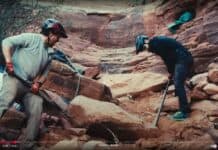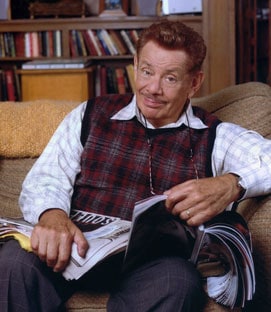At the current rate of sale, it might take almost four years to sell all the $1 million homes currently on the local market, just one indicator that 2008 was a bad year for real estate throughout Sedona and the Verde Valley.
Every measure of real estate activity in the Sedona area fell in 2008.
Records maintained by the Sedona Verde Valley Association of Realtors show median home prices dropped dramatically and foreclosure actions more than doubled last year compared to 2007.
By Greg Ruland
Larson Newspapers
At the current rate of sale, it might take almost four years to sell all the $1 million homes currently on the local market, just one indicator that 2008 was a bad year for real estate throughout Sedona and the Verde Valley.
Every measure of real estate activity in the Sedona area fell in 2008.
Records maintained by the Sedona Verde Valley Association of Realtors show median home prices dropped dramatically and foreclosure actions more than doubled last year compared to 2007.
In fact, the number of foreclosure actions in 2008 topped out at 2,860, up 500 percent from a low of 525 in 2005, according to Randy Crewse, broker with Prudential Northern Arizona Real Estate.
All these foreclosed homes could become “inventory for the late spring and early summer 2009,” Crewse said. “The number of foreclosed homes has to begin a downward path in order for the market to recover.”
Many other indicators paint a very slow Sedona market in 2009. For example:
n The total number of single family homes sold in the Sedona area fell to 229 in 2008 from 254 in 2007, the lowest number of sales recorded since 1996, according to SVVAR.
Median sale prices for single family homes in the Sedona area fell nearly 20 percent, from a high of $590,000 in 2006 to a low of $480,000 in 2008.
Cumulative days on market for single family homes in the Sedona area are up 87 percent from their low in 2005.
The number of transactions for homes over $1 million is down 52 percent from the high in 2006.
Vacant land sales are in a basic free fall with the number of transactions off 86 percent from their high in 2005 and median sales prices are off 42 percent from the high in 2006.
Things aren’t much better in the Cottonwood, Clarkdale, Jerome and Cornville areas, where the number of single family homes transactions were down 62 percent in 2008 from its high in 2004 and the median sales price is down 19 percent from its high in 2007.
In the Camp Verde area, the number of transactions is down 55 percent from its high in 2004. “Median sales prices [in Camp Verde] have gone up over the last several years and are virtually unchanged from 2007 to 2008,” Crewse said. “Inventory levels indicate a 28.5 month supply of homes based on 2008 sales. I expect we will see a decline in median sales price in 2009 for these areas of the Verde Valley market.”
In the Rimrock and Lake Montezuma areas, the number of transactions is down 69 percent from its high in 2005. The median sales price is down 28 percent from the high in 2006 with most of the drop occurring in 2008.
“This area is being hit the hardest by foreclosures and is the lowest priced housing in the Verde Valley,” Crewse said.
Residential inventories are down for all areas of the Verde Valley.
“A good part of this reduction is seasonal and I expect to see inventories rise as we head into the year peaking in the fall,” he said. “In the Sedona area there currently is a 24 month supply of single family homes on the market.”
The national economy has to improve for Verde Valley real estate to improve, Crewse said. This will require job creation on both a national level and in the state of Arizona.
“In addition to job creation we need to see the federal government and the Obama administration step in to slow down the rate of foreclosures,” Crewse said.
Unfortunately, about 65 percent of the homes being foreclosed on are nonowner occupied. “These homes will just have to move through the foreclosure system,” Crewse said, adding to inventories and depressing prices.
Despite the discouraging trends of 2008, Crewse harbors hope for the future.
“I believe we will see the federal government step in to stem the rate of foreclosures as they have done with Citibank, and additionally step in with low interest rate support and tax credit incentives for buyers,” Crewse said. “All of these things will help to produce a bottom in the real estate market, hopefully in the third or fourth quarter of 2009.”
With the reduction in sales prices, historically low interest rates and tax credits for home buyers, 2009 will be a good time to be a buyer of real estate, Crewse said.
“Buyers will have a large number of homes at reduced prices to choose from,” he said.
“As a realtor trying to survive in this market, my favorite saying, ‘the more real estate energy that you put out into the universe, the more that will come back to you,’ is more important and truer than ever,” he said.
Crewse urged real estate brokers to renew their relationships with past clients, target a small productive area and put real estate energy into it.
“The compound effect of doing small activities over time creates magic,” he said.


















